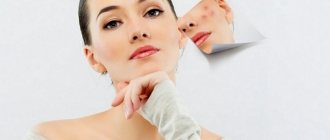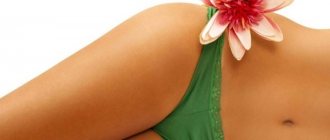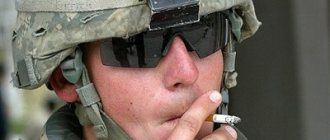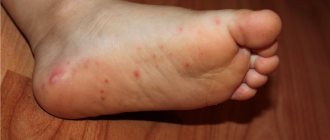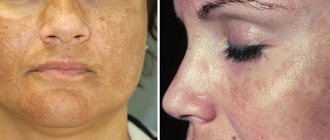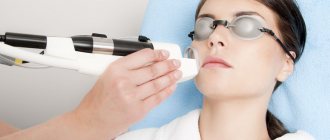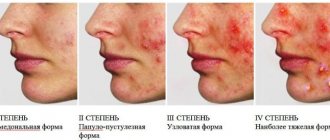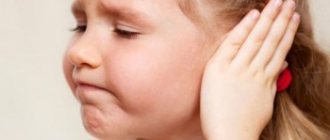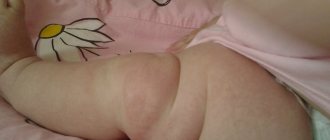Contrary to popular belief about men's indifference to their appearance, acne can spoil everyone's mood. Noticeable skin defects, even if hidden on the back most of the time under clothing, can cause serious psychological discomfort. Therefore, the problem can and should be dealt with.
The pathogenesis of acne is quite complex and practically does not depend on the gender of the person. At least that's what many dermatologists say. However, according to statistics, it is women who are more often susceptible to acne, which is largely due to regular fluctuations in hormonal levels that occur during pregnancy, menopause and menopause. At the same time, a severe form of the disease is observed more often in men, which is associated with greater activity of the sebaceous and sweat glands. Acne usually affects not only a man’s face, but also his back.
Types of acne and degree of damage
Classification of acne according to clinical signs includes 4 main forms of acne:
- Comedonal . The skin is dominated by comedones - sebaceous plugs formed as a result of the accumulation of sebum and dead epithelial cells. There is usually no inflammatory process in this form of acne.
- Papulopustular . A mixed type of acne, in which comedones and papules (reddish bumps) “dominate”, but single pustules (vesicles with purulent contents) are also observed.
- Nodal . Pustules predominate on the face (back, chest), their total number exceeds 25 units.
- Heavy . A form of the disease in which pustules coalesce to form large, painful nodules. The inflammatory process affects large areas of the skin.
IMPORTANT! Acne usually progresses with an increase in clinical symptoms: first, a blockage of the sebaceous gland is formed, then an inflammatory process is added to it - the result of the vital activity of pathogenic microorganisms.
When determining the degree of acne, the number of different types of rashes is assessed - comedones, papules, pustules, nodules.
There are four degrees of severity of the disease :
- 1st degree: characterized by a moderate number of comedones (25-30 pieces) and single papules;
- 2nd degree: the number of inflamed elements (papules and pustules) does not exceed 50 pieces;
- 3rd degree: extensive cyanotic nodes and cysts are observed, which, when healing, leave deep scars;
- 4th degree: characterized by all types of rashes: comedones, papules, pustules and nodes are present in large quantities, which can merge with each other, forming extensive painful inflamed areas on the face or body. When healing occurs, ugly scars remain.
Causes of acne on the back in men
The main reason for the formation of acne is increased sebum production, which is influenced by the following internal and external factors:
- hormonal activity during puberty (at 14-19 years old, acne is present in 50% of young men);
- hereditary predisposition;
- hyperkeratosis is a skin disease accompanied by keratinization of the upper layer of skin;
- diseases of the gastrointestinal tract;
- endocrine disorders;
- stress, emotional fatigue;
- improper skin care or its complete absence;
- demodicosis is a disease caused by a skin mite;
- taking anabolic steroids, bromine or iodine preparations;
- abuse of fatty, fried, spicy, sweet foods;
- skin microtraumas;
- increased sweating;
- excessive physical activity that causes sweating.
YOU SHOULD KNOW! Wearing clothes made from artificial materials can cause acne on your back and shoulders! Tightly fitting synthetic fabric prevents normal air exchange, which causes increased sweat production - an ideal breeding ground for pathogenic microorganisms.
Video: Causes of acne on a man’s back.
Why do big pimples appear?
Extensive areas of inflammation appear as a result of insufficient treatment of superficial forms of acne . Papules and pustules, merging with each other, form large painful subcutaneous nodes, which, when healing, form ugly scars.
The main cause of “internal” acne is infection of the skin by bacteria: streptococci, staphylococci, propionbacteria, corynebacteria, etc.
Infection of the sebaceous ducts can be caused by microtrauma of the skin, self-squeezing of pimples, weakened immunity, and abuse of “unhealthy” food and alcohol.
How to identify the cause of acne?
If the reason for the appearance of acne on a man’s back is obvious, for example, wearing synthetic clothing, poor body hygiene or over-consuming junk food, then it is enough to eliminate the provoking factor , and the problem will go away on its own.
In other cases, you should make an appointment with a dermatologist : he will examine the patient, make a diagnosis and prescribe treatment. Sometimes it may be necessary to consult other specialists: a gastroenterologist, an endocrinologist, an infectious disease specialist.
Laboratory tests do not play a decisive role in the diagnosis of acne, since a history and external examination of the patient is usually sufficient to make a diagnosis. However, in advanced or complex cases, additional examination may be required to help clarify the causes of acne or identify complications.
Tests that may be prescribed for acne:
- general blood analysis;
- bacteriological scraping from an inflamed area of skin;
- determination of blood glucose levels;
- determination of hormonal levels.
If endocrine disorders in the body are suspected, an additional ultrasound of the thyroid gland may be prescribed.
Diagnostics
To make a correct diagnosis, you need to consult a dermatologist. A specialist based on the type of rash will be able to determine the approximate cause and advise which tests need to be taken.
The doctor may ask about habits, lifestyle, nutrition and personal hygiene. These questions will help you choose the right course of treatment.
In case of internal problems, it will be necessary to do an ultrasound of the abdominal organs, an examination of the thyroid gland and a blood test. An allergy test may be required.
Treatment of back acne in men
Different approaches are used to treat different types of acne, taking into account the individual characteristics of the patient and the severity of the disease. Therapy includes both local and systemic medications that reduce sebum production and prevent the growth of bacteria on the skin.
Video: How to get rid of acne on your back yourself.
Folk remedies
Folk remedies for treating acne on the back:
- Sea salt . 1 teaspoon of coarse sea salt is diluted in a glass of boiled water. A clean towel or napkin is moistened with saline solution and applied to the back for 30 minutes, after which the product is washed off with clean water.
- Baths with sea salt are also effective against acne: 500 grams are dissolved in a full bath of water. salt. It is recommended to lie in the healing water for 20-30 minutes.
- Tar soap . Used for daily body wash instead of regular product. It is advisable to leave the soap foam on the skin for 5-7 minutes.
- Tincture of calendula . It has a strong drying property, so it is applied directly to inflamed areas of the body up to 4-5 times a day.
IMPORTANT! It is advisable to use folk remedies in the initial stages of acne. In severe cases, treatment should be prescribed by a doctor!
Video: Affordable acne remedies.
Pharmacy and medical supplies
To treat comedonal acne, it is sufficient to use external medications that suppress the development of pathogenic microflora and prevent the production of sebum.
Suitable products are salicylic acid preparations, tretinoin, azelaic acid and others.
For inflamed acne that occurs in a mild form , alcohol solutions of salicylic acid, antibiotic ointments, resocin and others are prescribed externally.
Treatment of severe acne requires a combination of topical and systemic medications. A prerequisite for successful treatment is antibacterial therapy, including the use of erythromycin, co-trimoxazole, tetracycline, and doxycycline.
Additionally, angioprotectors, immunomodulators, vitamin C, B vitamins, and drugs to normalize lipid metabolism are prescribed.
ATTENTION! Treatment for moderate to severe acne should only be prescribed by a doctor!
Diet
Proper and nutritious nutrition is the best prevention of acne formation on the face and body. The functioning of the gastrointestinal tract directly depends on the quality of food consumed. Malfunctions in the digestive system are reflected on the skin in the form of excessive oiliness, acne, etc.
- The daily diet of a person suffering from acne must include lean meat or fish, fresh vegetables and fruits, dairy and fermented milk products, and cereal dishes.
- It is necessary to exclude all “unhealthy” foods from the diet: smoked meats, pickles, marinades, soda, fast food, mayonnaise, chocolate, cakes with rich cream, etc.
- Food should be boiled, stewed or baked without forming a crust. Frying foods in large amounts of fat is extremely undesirable.
It is important to understand that a diet for skin acne should be followed regularly, that is, become part of your lifestyle.
Effective means
To deal with skin rashes, you can use one of the following remedies:
- hydrogen peroxide – it is recommended to choose a 3% solution and systematically treat problem areas;
- salicylic acid – suitable for daily use;
- baths with decoctions of medicinal plants - oak bark, chamomile, string, celandine;
- baths using sea salt;
- masks made of clay or algae;
- rubbing with calendula tincture - this can be done twice a day.
You can also add a few drops of essential oils that have an anti-inflammatory effect to the bath. Tea tree, orange, grapefruit, and tea rose are suitable for this purpose. Lotions based on streptocide or furatsilin will help eliminate rashes.
All these procedures help improve skin tone and elasticity, they effectively cope with inflammatory processes and prevent the appearance of new acne.
Diet correction is of no small importance for the treatment of acne. To cope with inflammatory processes, it is very important to avoid fatty and fried foods. It is also worth limiting the consumption of sweet and refined foods as much as possible.
It is advisable to include the maximum amount of fiber, fresh vegetables and fruits in your diet. It is very useful to consume fermented milk products, since they contain bifidobacteria, which help improve skin condition.
If folk remedies do not give the desired results, you can use more potent drugs - baziron, skinoren, zinerit. However, these medications have certain contraindications, and therefore it is better to consult a doctor before using them.
Experts also advise using creams, ointments and gels with active ingredients. Such products often include antibiotics, retinoids, and benzoyl peroxides. In severe cases, medications containing such ingredients are prescribed orally. The duration of the course of therapy should be determined exclusively by a specialist.
If acne on the back and shoulders is accompanied by increased peeling, it is recommended to treat the skin with panthenol. This is a fairly effective remedy, completely safe for health, so it can be used quite often.
You should absolutely not squeeze pimples, as the infection can get under the skin, and then it will be much more difficult to solve the problem. If acne does not disappear, and the condition only worsens, you should definitely consult a dermatologist and therapist.
Sometimes the cause of such problems lies in the presence of diseases in the body. To identify them, you need to undergo a number of tests. The specialist will also be able to give advice on how to prevent further rashes.
Where to go if acne doesn't go away?
If it is quite possible to cope with “mild” acne on the back on your own, then moderate and severe manifestations of acne should only be treated by doctors. For an initial consultation, you should contact a dermatologist .
He will examine the patient, make a primary diagnosis and develop the correct treatment strategy.
You may need consultation with other medical specialists and laboratory diagnostics (see section “How to identify the cause of acne”).
How treatment occurs, methods
An integrated approach to the treatment of back acne in men occurs with the active participation of the patient himself and several medical specialists.
acne therapy include :
- Maintain personal hygiene (daily shower).
- Application of external agents.
- Use of systemic medications (for moderate to severe acne).
- Correction of endocrine or digestive disorders.
- Local acne cryotherapy (cryomassage) – treatment of inflamed areas with ice or liquid nitrogen.
- Electrophoresis with ichthyol solution.
- Chemical peeling.
- Autohemotherapy is the subcutaneous injection of the patient’s own venous blood into problem areas of the skin.
What will happen if left untreated, consequences
The inevitable consequences of acne are scars and red spots on the back that will accompany a person throughout his life.
Of course, skin defects on the back cause less psychological discomfort than potholes and pigmentation on the face, but still they can cause emotional distress.
To correct the effects of acne, you can resort to salon procedures: chemical or laser peeling, mesotherapy, ozone therapy, and physiotherapy.
